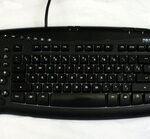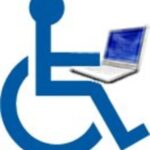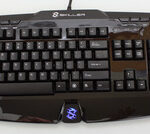The computer wave is here. By now, typewriters are basically gone with the past. The computer keyboard has taken their place. The computer keyboard looks almost like a typewriter keyboard does, with the exception of a few keys. Can you use a computer without knowing what those keys can do, yes. But if you know their functions your computer experience can be a lot easier and you can save time (something we all love to do).
The function keys are the top row of keys that begins with the key F1. Why are they called the function keys? Basically because they perform a function. They were invented in the first days of computers when computer programmers used DOS programs. Yet, they are still used some today. A lot times, these key are also used with ALT, CTRL and the SHIFT key. These keys are found in the lower part of your keyboard near the spacebar. Here’s a brief listing of each function key.
F1: This is the help key. If you press this when you are on the windows desk top or on a windows explorer page, windows help will appear. If you are working in another program and you want to see the windows help program, press the windows button (which is located on the bottom row, it’s the key with the windows logo on it) and the F1 key at the same time.
F2: You can use F2 to rename a folder or file. When you are on the documents, pictures or music display page, highlight the folder you wish to rename and press F2.
F3: This is the find files button. You can use this anytime when working in Windows.
You can also use the F3 key in Microsoft Word Program to change the case form of
letters you are using from all capital to lowercase. To do this, first highlight the
letters you want to change and then press F3 and the Shift key.
F4: F4 will open the address bar in Internet Explorer. You can also use F4 and the ALT key to close any web page.
F5: This key will refresh the page for you. This is really invaluable when you are on an active message board.
F6: You can use this key to cycle from window to window by pressing it more than once.
F7: This key does not have any function in Windows. But it does in some other programs. If you are using a program and wonder if F7 does have a function within it, you usually can check under the program’s help page under function keys. You can use the F7 function key when using the Microsoft Word Programs. When you press it while using Word you will bring up the thesaurus.
F8: You can enter your computer’s safe mode by pressing F8 during the booting process.
F9: This key is like F7 in that it does not have any function in Windows. Again, like F7, it may have a function in other programs.
F10: This key will bring up the menu in most programs. If you press the SHIFT key at the same time as F10 you can usually bring up a short cut menu.
F11: When you are working in Internet Explorer, you can press the F11 key and view any page at full view, causing all toolbars to disappear. This is useful for pages that contain a lot of information. When you press F11 again, the toolbars will reappear.
F12: Like F7 and F9, F12 does not have any real function in Windows. But this key could have a function in other programs.
Try using the Function keys and see how you like them. Every short cut taken is a second you saved.






